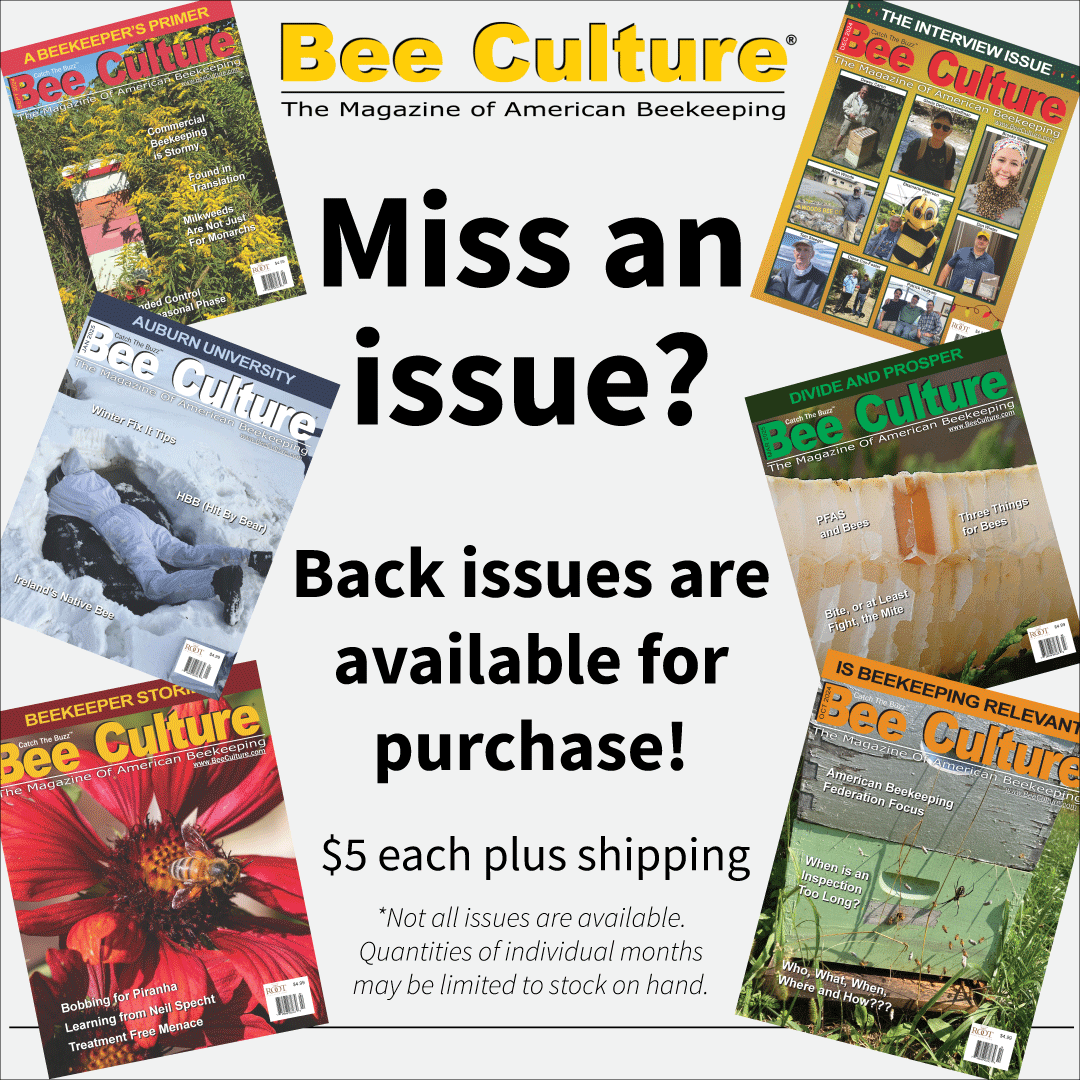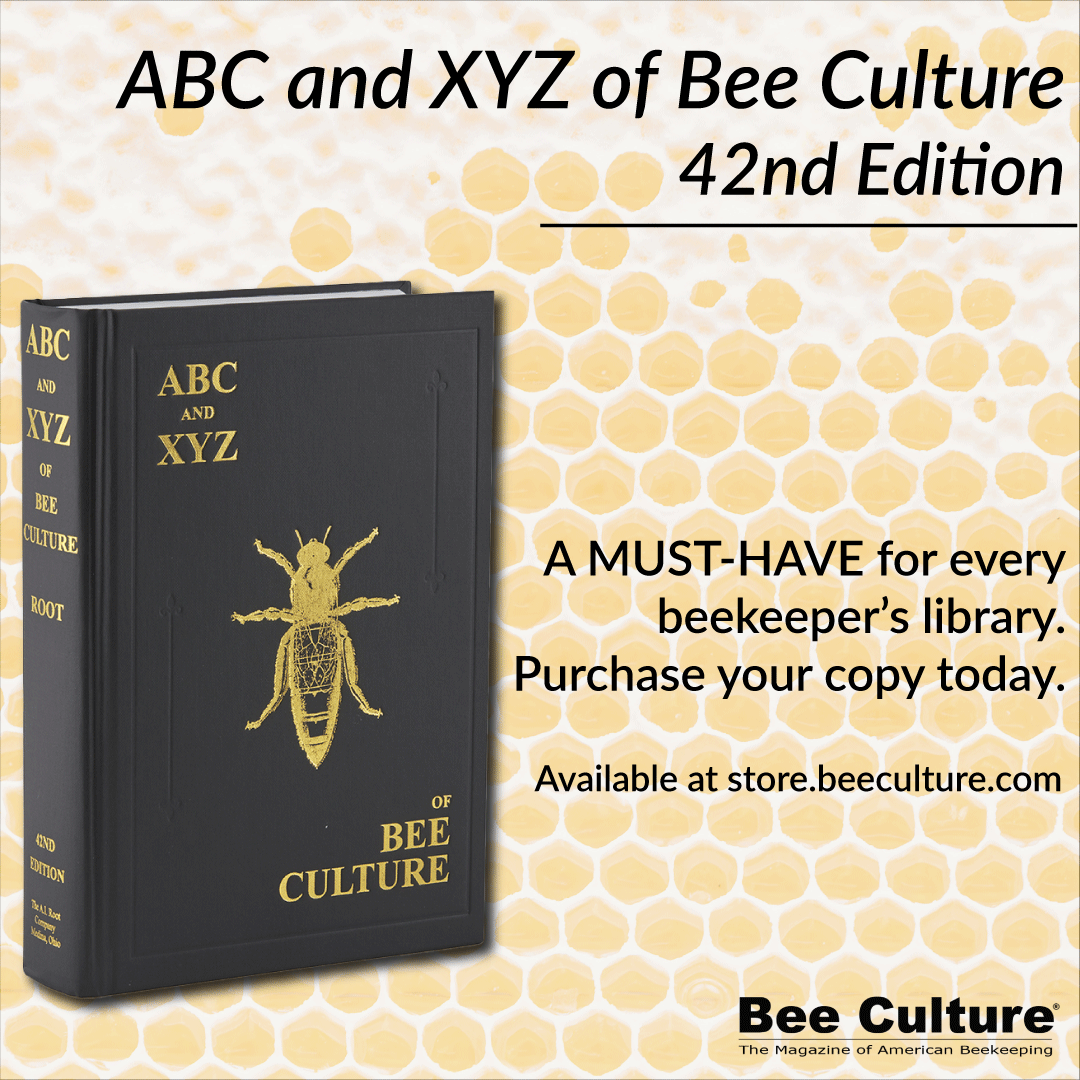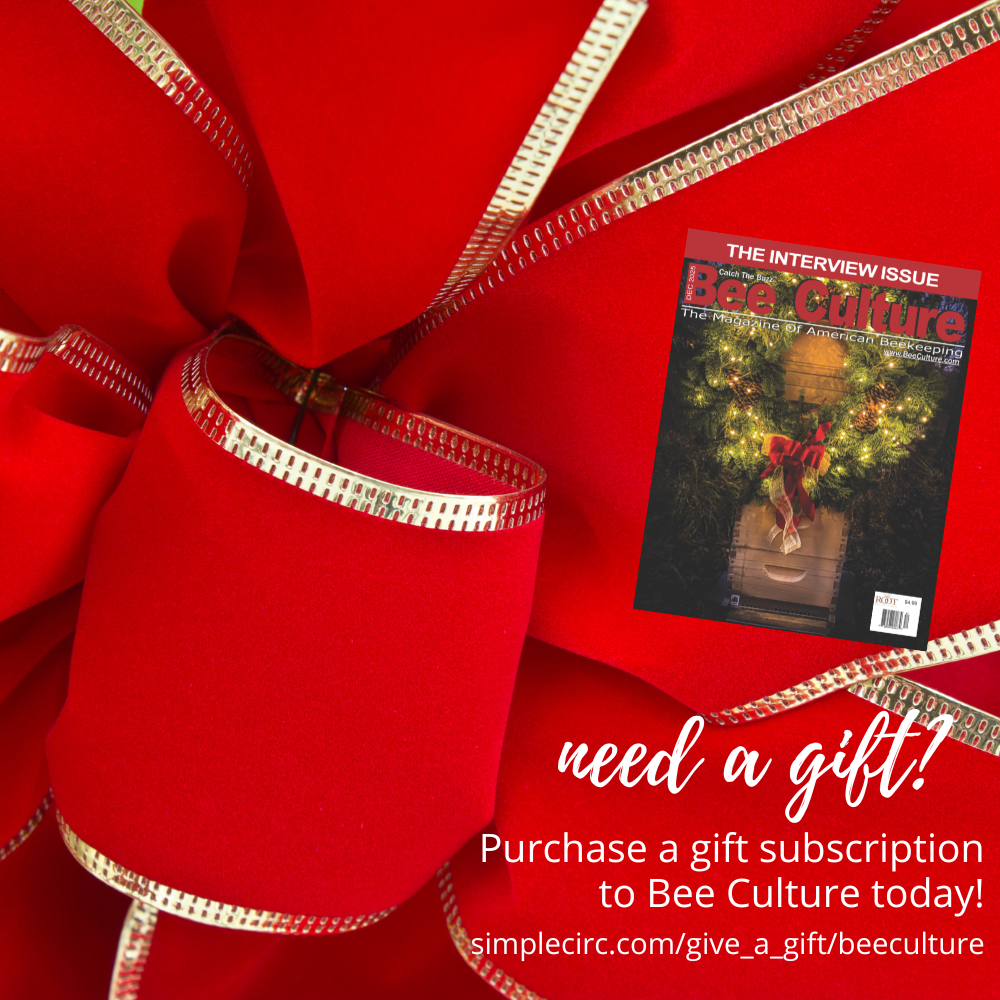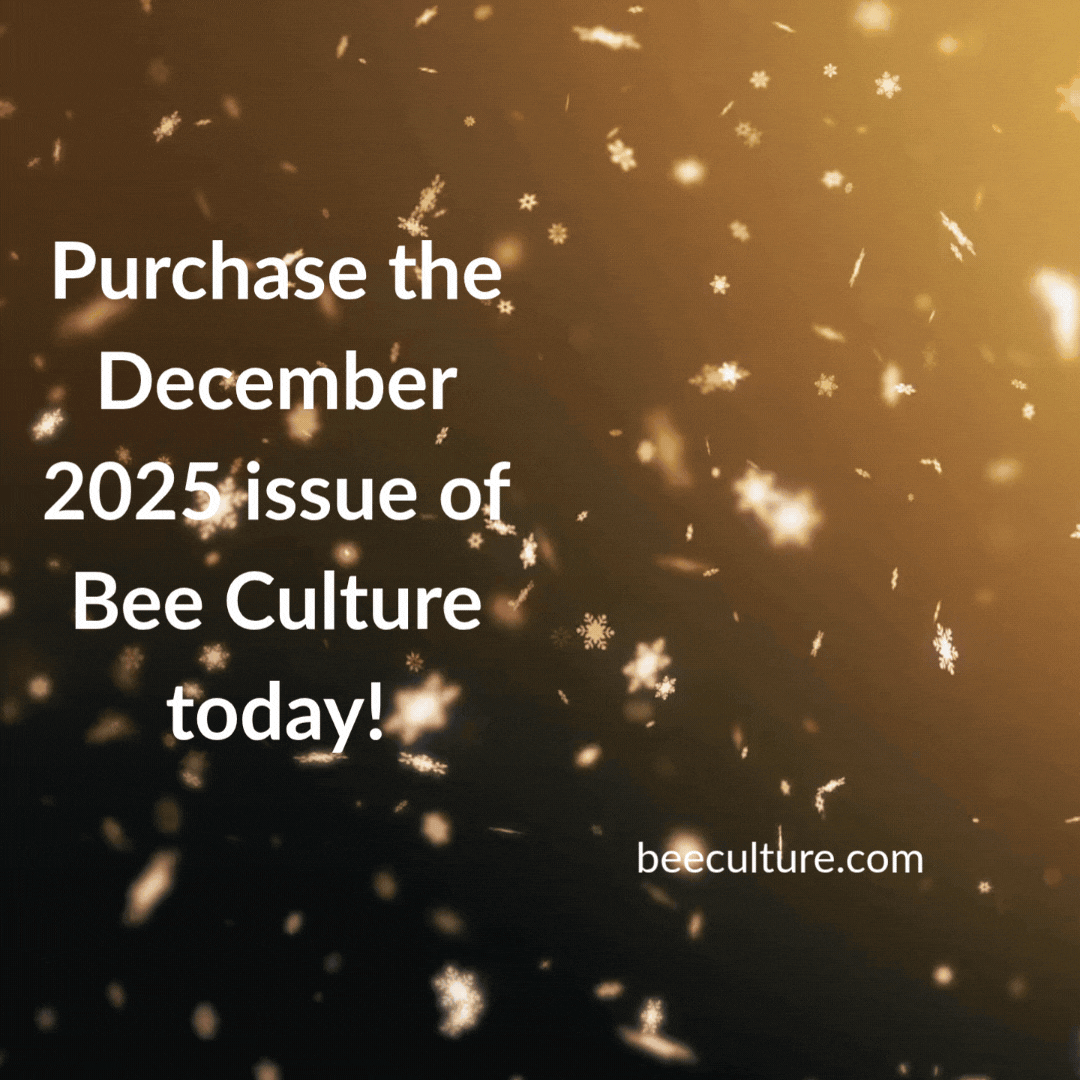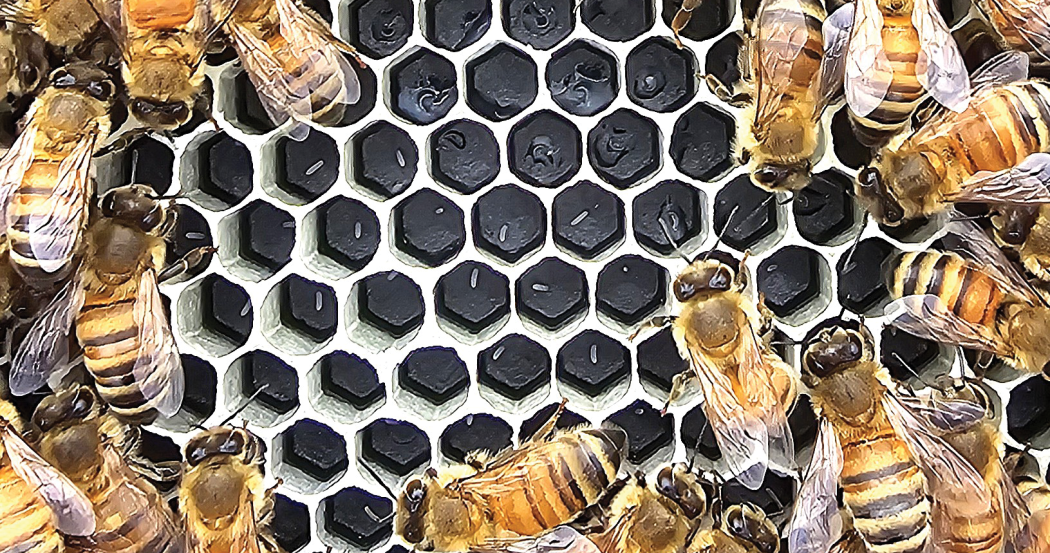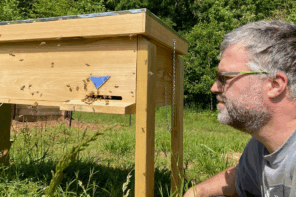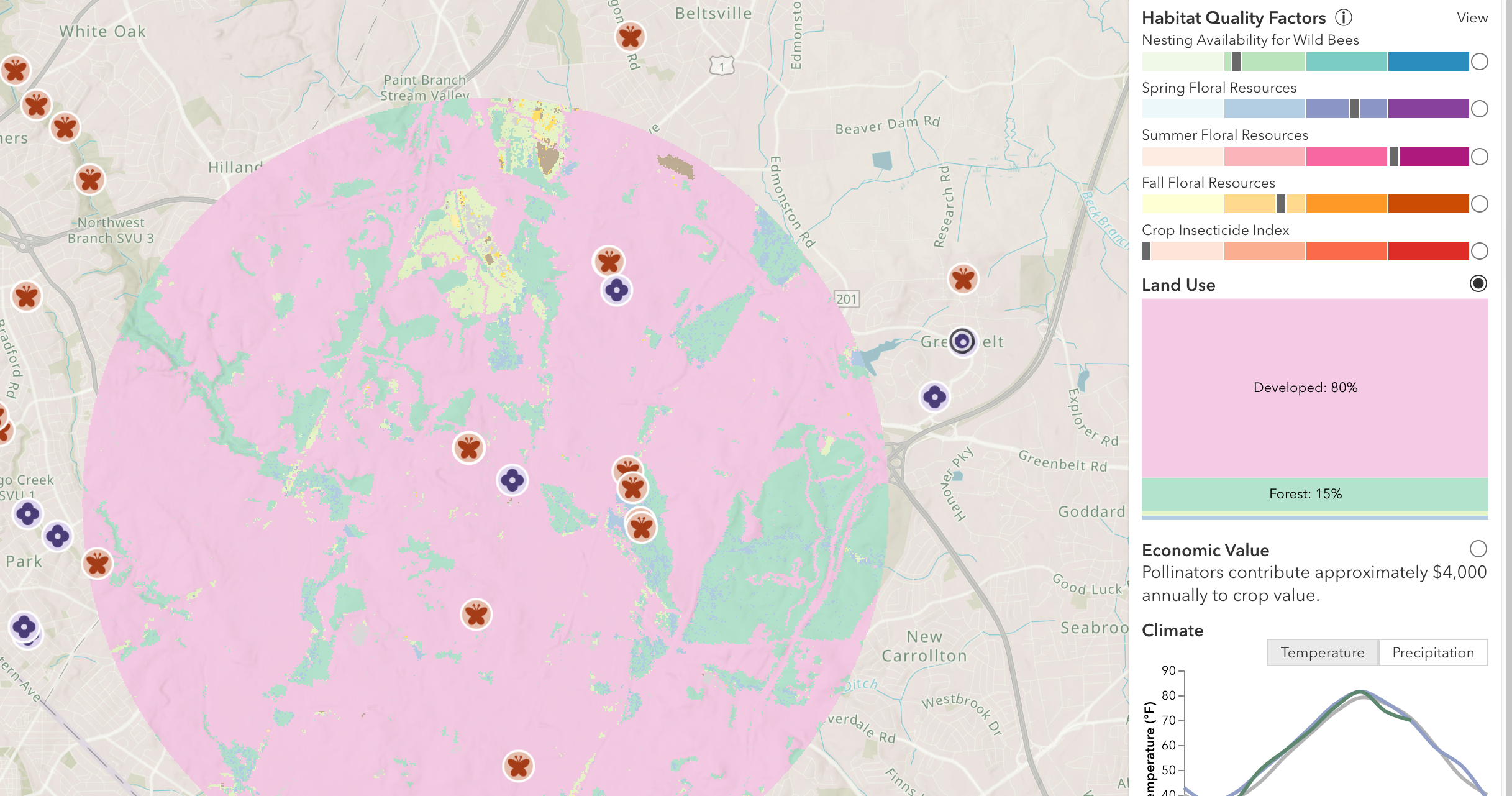Click Here if you listened. We’d love to know what you think. There is even a spot for feedback!
Read along below!
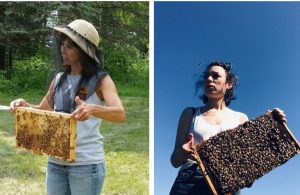
Becky Masterman earned a PhD in entomology at the University of Minnesota and is currently a host for the Beekeeping Today Podcast. Bridget Mendel joined the Bee Squad in 2013 and led the program from 2020 to 2023. Bridget holds a B.A. from Northwestern University and an M.F.A. from the University of Minnesota. Photos of Becky (left) and Bridget (right) looking for their respective hives. If you would like to contact the authors about your divides, please send an email to mindingyourbeesandcues@gmail.com.
Minding Your Bees and Cues
Eggcitement
By: Becky Masterman & Bridget Mendel
Between the skyrocketing price of chicken eggs, the Resurrection and magical bunnies, eggs keep popping up in our newsfeed, so it is a good time for a good old fashioned egg update. This one won’t cost you dearly. We aren’t advocating for bee egg omelets or microscopic Pysanky techniques or anything like that. We’re just casually checking in on scientific eggsperiments of the day.
Eggs and viruses
In an effort to understand the role of virus infection and honey bee health, Chapman et al. (2024) experimentally infected honey bee queens with both infectious and inactive viruses. The queens that were injected with infectious viruses were less likely to resume egg laying than their inactive virus injected counterparts. Higher virus levels were associated with fewer laid eggs. Colonies with heavily infected queens in their field experiments were more likely to have supersedure cells. These results demonstrated a direct relationship between queen viral infection and supersedure.
A study done in Slovenia by Domingues et al. (2024) evaluated how screening eggs for viruses could be used as a selection tool by queen breeding operations. They screened for 7 viruses in eggs, larvae, pupae, and adult queens. Acute bee paralysis virus (ABPV) was present in the colony but not detected in the eggs). The egg screening did successfully detect the prevalence and viral loads of chronic bee paralysis virus (CBPV), sacbrood virus (SBV), deformed wing virus – A and B (DWV-A and DWV-B), black queen cell virus (BQCV), and Lake Sinai virus (LSV3). The authors suggest that although more refinement on the screening tool is needed, using eggs to screen breeder queens for virus has promise.
Egg laying and wind turbines
If you are up at night worrying about the impact of wind turbines on your apiaries, there is sound sleep in your future. A French study examined colony health in apiaries that are close to wind turbines and used queen eggs laid by young, recently mated queens as one of their measurements. They stocked control (safely out of wind turbine range) and experimental (intersecting with the turbine footprint) colonies at two different wind farm sites with virgin queens and drone colonies. Based on egg laying (measured 5-6 weeks after virgin queen introduction) and a number of other measurements, they were not able to find any impact of the wind turbines on the honey bee colonies. Before you sleep too soundly, this research was initiated because there is a measurable wind turbine impact on birds and bats.
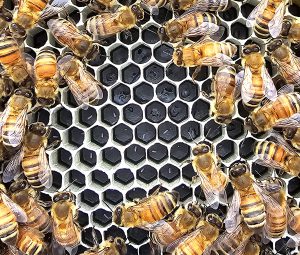
From the impact of vitamins to viruses and the use of high-tech screening tools, recent
honey bee egg research is answering important bee health questions. Photo credit: Rebecca Masterman
Eggs and pesticides
A recent laboratory study (Iqbal et al. 2024) evaluated the impact of four pesticides (Emamectin benzoate, Chlorpyrifos, Imidacloprid, and Acetamiprid) on honey bee brood and adults. In a pick-your-poison scenario, the least toxic of the four insecticides to eggs was Emamectin benzoate. Average egg mortality after exposure to Emamectin benzoate was less than 20%, while it was greater than 80% in the other three insecticide exposures. Adult and larval mortality was also measured and Emamectin benzoate was also found to be less lethal, but mortality to 5th instar larvae was 60%. Although reported to be less toxic than the other insecticides studied, Emamectin benzoate is a broad spectrum biogenic pesticide. It has many applications, including injection into trees to combat the emerald ash borer, and is listed as toxic to honey bees, birds, aquatic invertebrates and fish. And humans at high enough doses.
Moving from the laboratory to a field study, Tokach et al. (2024) compared honey bee colonies in a systemic pesticide contaminated site with a control site. Queen egg laying was significantly lower in the contaminated site colonies. The study authors warn of the potential sublethal impacts of pesticide contamination in a colony. They point to the need for better tools for identifying potential contamination. These studies remind us of why comb replacement is an important part of colony management (though if you read our monthly article, comb replacement reminders aren’t entirely rare).
In-Hive Flatbed Scanners
Need help detecting eggs in your colonies? A pilot study in Germany investigated using flatbed scanners embedded in a frame as a research tool. Borlinghaus et al. (2024) successfully used this technology to perform continuous non-destructive monitoring of colony brood nests. Highlights of this high-tech frame include the observance of egg laying and the detection of varroa and chalkbrood (Ascosphaera apis). The scans also visualized worker hygienic behaviors that facilitated the removal of varroa infested brood. While this scanning technology was not actually developed for the beekeeper to monitor eggs in their colonies (we could only hope!) it shows promise as a tool for researchers.
Vitamin Supplementation and Egg Yield
Scientists in Mongolia were interested in how vitamin supplementation via pollen substitutes would impact queen bee egg yield and subsequent colony strength and honey yield. Narantuya & Norovsambuu (2024) added different doses (1, 2 and 3 grams) of a vitamin supplement to a Brewer’s yeast, corn gluten, water and soybean oil pollen substitute and measured the impact on their colonies. The details about ingredients are in the paper. Their results demonstrated the positive impact of the vitamin supplements compared to their controls of no pollen substitute and pollen substitute without vitamins added. As Goldilocks always says, the middle dose of the proverbial porridge is often best, and in this case led to the best egg production, colony strength and honey yields.
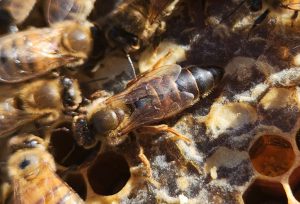
Sampling an adult queen for viruses is a dead end for the opportunity to pass on her genes. Domingues et al. (2024) has found promise in screening eggs for viruses as a tool for queen breeders. Photo credit: Rebecca Masterman
It is almost that time when U.S. beekeepers are in sync and on the hunt for eggs. We hope that this recent egg data update will give you something to talk to your bees about while searching for those queen-confirming ova during Spring inspections.
References
Borlinghaus, P., Gülzow, J. M., & Odemer, R. (2024). In-hive flatbed scanners for non-destructive, long-term monitoring of honey bee brood, pathogens and pests. Smart Agricultural Technology, 9, 100655-. https://doi.org/10.1016/j.atech.2024.100655
Chapman, A., McAfee, A., Tarpy, D. R., Fine, J., Rempel, Z., Peters, K., Currie, R., & Foster, L. J. (2024). Common viral infections inhibit egg laying in honey bee queens and are linked to premature supersedure. Scientific Reports, 14(1), 17285–18. https://doi.org/10.1038/s41598-024-66286-5
Domingues, C. E. C., Šimenc, L., Toplak, I., de Graaf, D. C., De Smet, L., Verbeke, W., Peelman, L., Ansaloni, L. S., & Gregorc, A. (2024). Eggs sampling as an effective tool for identifying the incidence of viruses in honey bees involved in artificial queen rearing. Scientific Reports, 14(1), 9612–9612. https://doi.org/10.1038/s41598-024-60135-1
Fourrier, J., Fontaine, O., Peter, M., Vallon, J., Allier, F., Basso, B., & Decourtye, A. (2023). Is it safe for honey bee colonies to locate apiaries near wind turbines? Entomologia Generalis, 43(4), 799–809. https://doi.org/10.1127/entomologia/2023/1858
Iqbal, S., Zhuo, Z., Ali, H., Xu, D., Niaz, Y., Shah, A. N., Almoallim, H. S., Ansari, M. J., Bodlah, M. A., Ali, B., Nawaz, M., Zaheer, M. S., Iqbal, J., & Buttar, N. A. (2024). Exploring the synergistic toxicity of synthetic pesticides and their impact on development and behavior of Honeybee (Apis mellifera L.). Emirates Journal of Food and Agriculture, 36, 1–7. https://doi.org/10.3897/ejfa.2024.122884
Narantuya, S., & Norovsambuu, T. (2024). Effects of Vitamin Supplements in a Pollen Substitute on Some Characteristics of Bee Nucleus Colonies. Bee Studies- Apiculture Research Institute. https://doi.org/10.51458/BSTD.2024.39
Tokach, R., Smart, A., Fassbinder-Orth, C., Fong, C., Wald, K., & Wu-Smart, J. (2024). Honey bee colony behavior and ontogeny are adversely affected when exposed to a pesticide-contaminated environment. Journal of Insect Science (Tucson, Ariz.), 24(3). https://doi.org/10.1093/jisesa/ieae034
https://en.wikipedia.org/wiki/Emamectin


